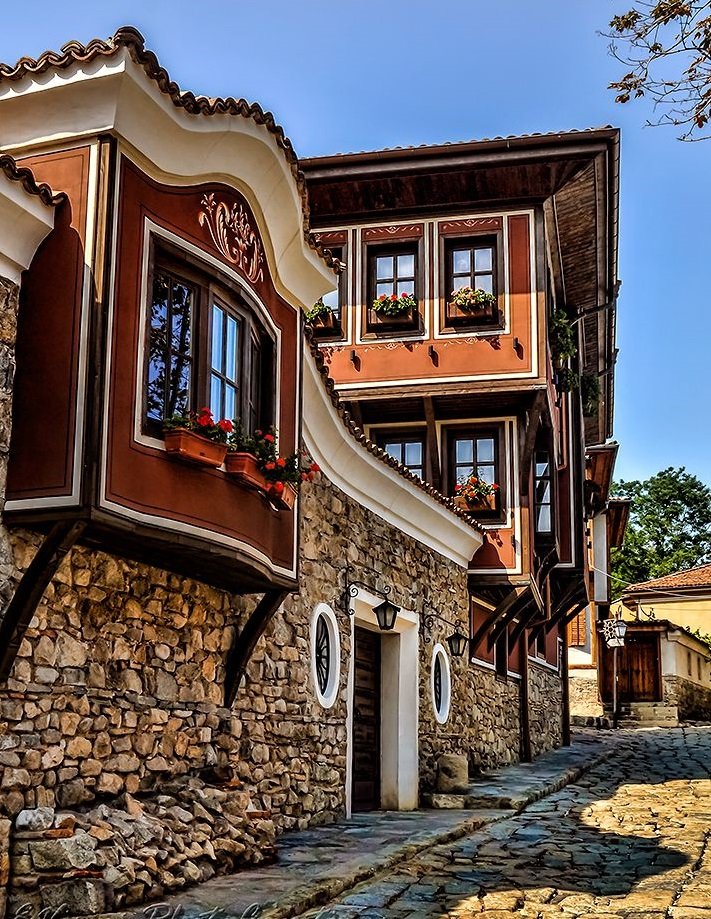#13689. Traditional Bulgarian facade: a synthesis of stone and wood with Revival-style bay windows
Before us stands a magnificent example of traditional Bulgarian architecture characteristic of the Revival period (presumably from the city of Plovdiv or a similar historical center). The building represents a classic example of the symbiosis of various architectural elements: the stone foundation of the first floor harmoniously combines with the timber-frame construction of the upper levels.
Special attention should be paid to the facade design with its expressive bay windows - protruding parts that create additional space inside the rooms while simultaneously serving as decorative elements. The curved lines of the cornices and protruding elements give the building plasticity and dynamism. The color scheme of the facade is built on the contrast between warm terracotta shades of the walls and white window frames.
Characteristic details include decorative carvings above the windows, traditional tiled roofing with a characteristic curve, and flower pots on the windowsills, adding life and color to the strict architecture. The round windows of the first floor contrast with the rectangular windows of the upper levels, creating an interesting architectural composition.
When designing modern facades, some solutions can be borrowed: playing with protruding volumes to create additional spaces, contrasting framing of window openings, combining different materials with varying textures (stone and wood), as well as using traditional decorative elements to give individuality to the building.
